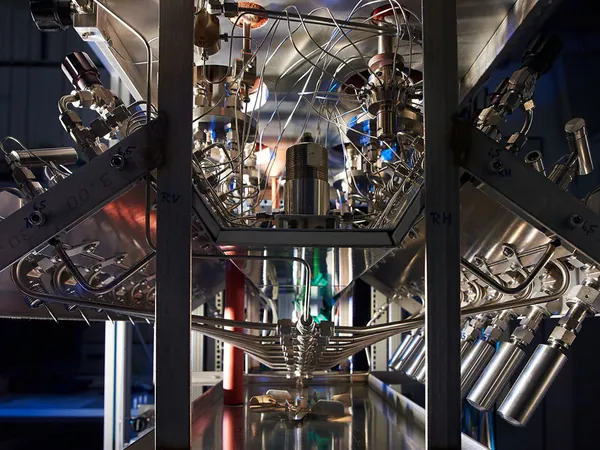
Unlocking CO2 Recycling: How AI Is Transforming the Future with ‘Small Data’ Models
2025-05-06
Author: Siti
A Green Revolution in Chemistry
Imagine a world where fossil fuels are replaced by eco-friendly alternatives! Scientists are working on a groundbreaking approach to carbon dioxide recycling through the hydrogenation process, particularly with CO2 Fischer-Tropsch synthesis (CO2 FTS), which converts CO2 and hydrogen into synthetic fuels. These fuels not only lack harmful sulfur or nitrogen compounds, but when hydrogen is derived from renewable sources, they promise a completely CO2-neutral cycle.
Data-Driven Discoveries
As research into CO2 FTS explodes, so does the amount of experimental data. Dr. David Linke from LIKAT emphasizes the importance of analyzing this data effectively to unearth hidden patterns linking catalyst properties to their chemical activity. This challenge has paved the way for the integration of artificial intelligence and machine learning.
Speeding Up the Catalyst Quest
Aleksandr Fedorov, a doctoral student under Dr. Linke, is at the forefront of this exciting transformation. His mission? To develop innovative catalysts and an AI model to evaluate the speed of complex reactions more efficiently. Traditionally, this analysis could take months, but now it can be done in mere milliseconds!
The Power of the Iron Catalyst
The research team's breakthrough was a highly effective iron catalyst, notably selective and extremely productive, activated within the production reactor. By carefully adding tiny amounts of potassium, copper, and aluminum, they minimized the formation of unwanted methane, focusing instead on valuable products.
Revealing Contradictions and New Avenues
Fedorov meticulously sifted through hundreds of publications, revealing contradictions regarding CO2 conversion to CO that had previously gone unnoticed. This pivotal discovery could open new doors for catalyst enhancements.
Small Data, Big Magic
In an exciting twist, Fedorov employed his catalyst data to train artificial neural networks for kinetic modeling of CO2 hydrogenation. This newfound AI model operates on ‘small data,’ which is a stark departure from conventional AI mold—making significant contributions to research outcomes in record time. Dr. Linke was amazed, stating, ‘It’s like magic!’
Open Source for a Shared Future
But what about accessibility? The AI models, including their source code, are made available as open source, allowing researchers worldwide to adopt and customize them. These solutions promote precision in reactor design and can train new models for various reactions. With the backing of the National Research Data Infrastructure (NFDI), Dr. Linke predicts that AI will revolutionize the chemical process landscape, from the lab bench to large-scale reactors.

 Brasil (PT)
Brasil (PT)
 Canada (EN)
Canada (EN)
 Chile (ES)
Chile (ES)
 Česko (CS)
Česko (CS)
 대한민국 (KO)
대한민국 (KO)
 España (ES)
España (ES)
 France (FR)
France (FR)
 Hong Kong (EN)
Hong Kong (EN)
 Italia (IT)
Italia (IT)
 日本 (JA)
日本 (JA)
 Magyarország (HU)
Magyarország (HU)
 Norge (NO)
Norge (NO)
 Polska (PL)
Polska (PL)
 Schweiz (DE)
Schweiz (DE)
 Singapore (EN)
Singapore (EN)
 Sverige (SV)
Sverige (SV)
 Suomi (FI)
Suomi (FI)
 Türkiye (TR)
Türkiye (TR)
 الإمارات العربية المتحدة (AR)
الإمارات العربية المتحدة (AR)